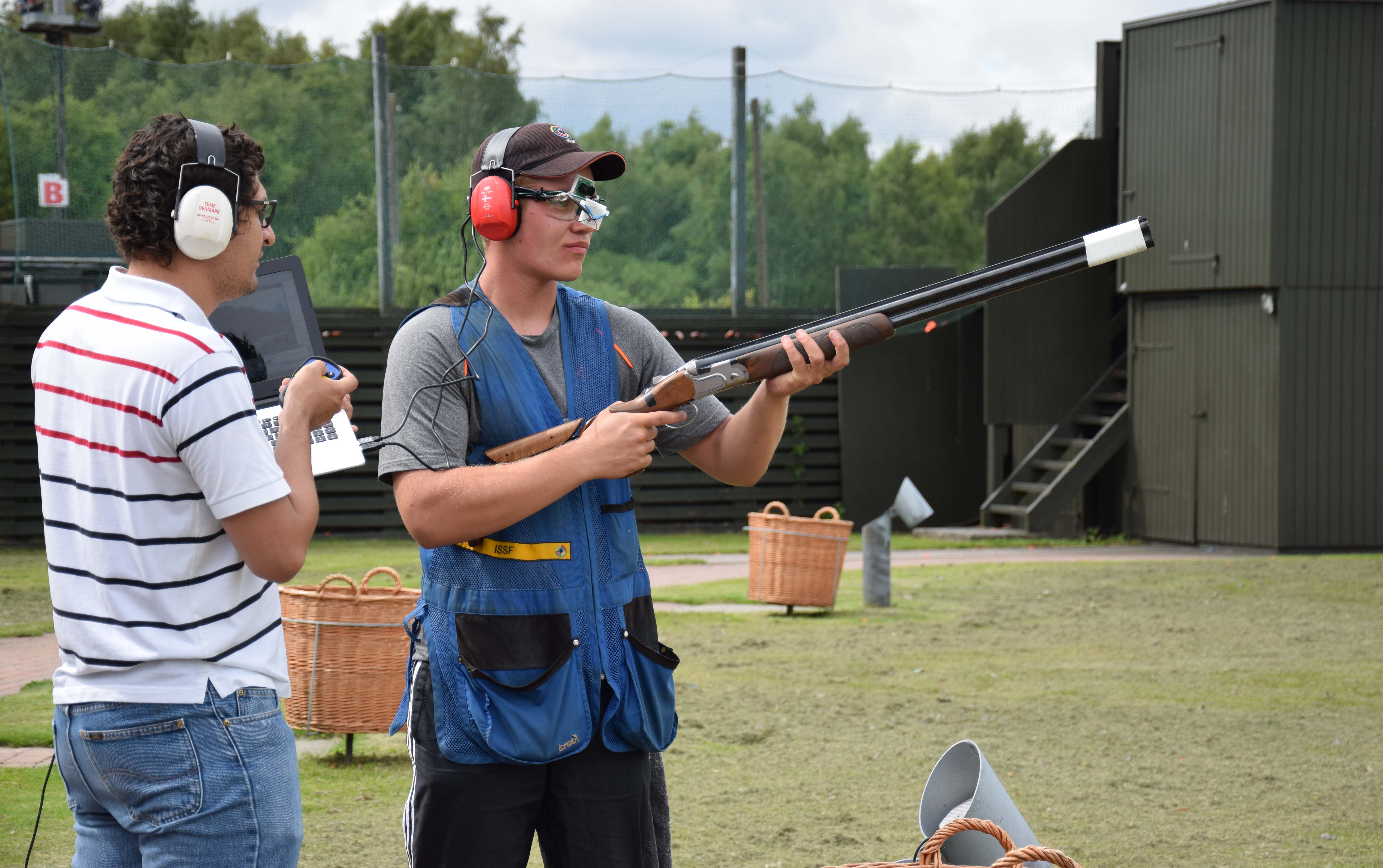Eye tracking data can improve athletes’ performances
Eye tracking technology provides new opportunities to analyze and improve the performance of athletes. In cooperation with professional athletes, researchers from the IT University of Copenhagen are investigating how the technology can be applied in sports like the Olympic discipline skeet.
ResearchDan Witzner HansenComputer Science Departmentsoftware
Written 15 August, 2016 06:58 by Vibeke Arildsen
In many sports, small details such as where the athlete turned his gaze in a crucial situation can mean the difference between defeat and a place on the podium. By making it possible to measure every movement and identify the exact strategies that lead to the best results, new technologies might improve athletic performances in everything from shooting to curling.
“Many sports are about training hand-eye coordination, and in this context eye tracking technology is really interesting. With this technology, we can measure the athletes with great accuracy and observe changes over time. Today, low-tech methods like manual video recording are used, so there is great potential for improving the little things that make a difference,” says Dan Witzner Hansen, Associate Professor and eye tracking researcher at the IT University of Copenhagen.
Experiments with Olympic shooter
In collaboration with the elite sports association Team Danmark, Dan Witzner Hansen and PhD student Fabricio Batista Narcizo are currently performing experiments with some of the best Danish shooters to develop the technology for training purposes.
For former skeet world champion Jesper Hansen, one of this year’s favourites in the Olympic skeet competition in Rio, the researchers are designing a system with four cameras that can film him simultaneously during practice.
“The goal is to create a fully automated system where you can reproduce each shot - what he looked at, when the shot was fired, how the target moved, how he moved his gun. After 100 shots you can analyse the data to find out when he hit the target, and what he can improve. The key is that you can go back and focus on the tiny detail that might be critical, and that you can quickly visualize the data,” says Dan Witzner Hansen.
No room for error
In skeet, the shooter has just 1.8 seconds and one shot to hit the target, from the moment it is rocketed from the tower. This means that there is no room for even the smallest error, explains Mikkel Petersen, another elite shooter participating in the eye tracking experiments.
“Skeet is not like football, where you can just create a new opportunity. A miss is a miss, and it reduces your score immediately. If your eyes begin to jump, searching the target where it isn’t, it’s very difficult to hit it.”
One of the challenges of using eye tracking in sports is to get the system to work outdoors where factors like changing light conditions make it difficult for the system to detect eye movements. As a part of his PhD project, Fabricio Batista Narcizo is working on developing a robust eye tracking system for use in extreme conditions, such as in sports. To this end, he has designed a pair of glasses fitted with two cameras. One camera captures the pupil movements using infrared light, while the other points towards the scenery the wearer is looking at. On his laptop, he can keep track of what the shooter looks at during the practice.
“It is easy enough to gather eye data while the user is sitting in front of a computer, but outdoors it is very complicated because of the reflection from the lenses, a less clear contrast between the eye and the pupil, smaller pupil size, among other things. In order to take these into account, we have developed new eye features detectors that reduce noise from outdoor images,” explains Fabricio Batista Narcizo.

On the skeet field at Københavns Flugtskytte Klub, PhD student Fabricio Batista Narcizo is collecting data about Mikkel Petersen's eye movements while the target is rushing through the air.
Another challenge is clearly visualizing the eye tracking data to understand exactly what the shooter was looking at during practice. Currently Fabricio is experimenting with plotting eye tracking data into images from a 360-degree camera in order to capture the entirety of the shooter's field of vision.
Although the research is still at an early stage, Mikkel Petersen recognizes the potential of using eye tracking technology.
“If you can develop the system with a camera that doesn’t impair your vision and generates a crystal clear picture, I can definitely see that you could use it in our training.”
Vibeke Arildsen, Press Officer, phone 2555 0447, email viar@itu.dk